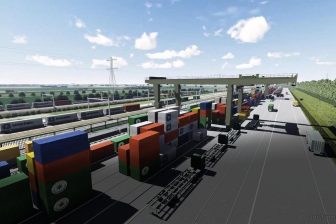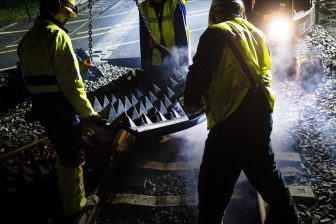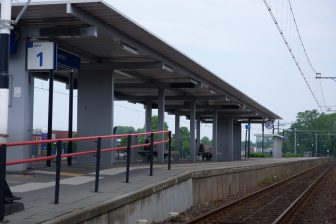Agenda 2015 for Combined Transport in Europe
Paving the way for a strong and lasting growth of Combined Transport
The objective of the Conference held at the UIC on 17 April 2008 was to present the Agenda 2015 for Combined Transport in Europe to the transport industry.
Agenda 2015 for Combined Transport in Europe is the concluding report of the DIOMIS study (developing infrastructure and operating models for intermodal shift) carried out by KombiConsult and K+P Transport Consultants under UIC guidance. The study gives to both suppliers and customers of intermodal services recommendations, strategies, actions and tools on how they can pave the way for a continuously stable growth of combined transport by the year 2015 and beyond in a context of congested infrastructure.
Luc Aliadière, UIC Chief Executive, opened the conference stressing the importance of DIOMIS as it illustrates one of the key missions UIC: to serve as a technical platform for its members and for the industry as a whole. He further emphasised that one of the great values of the study was to bring together all stakeholders providing logistic solutions involving rail with the aim to achieving modal shift for the benefit of the freight market and society (sustainable development).
Martin Burkhardt, Director General of UIRR, and Gilberto Galloni, Chairman of Europlatforms, expressed the support of the member companies of their Associations, and outlined their collaboration to the project.
AGENDA 2015 FOR COMBINED TRANSPORT addresses three issues:
Growth potential of unaccompanied combined rail/road transport in Europe by 2015
Eric Peetermans, Chairman of the UIC Combined Transport Group gave an outline of the growth potential of combined transport in Europe by 2015. The intermodal industry is expected to more than double the total volume of shipments by 2015. Total unaccompanied combined rail/road traffic in Europe is forecasted to increase to 268 million gross tonnes by 2015 up 113 per cent from the 2005 volume. This signifies a mean annual growth rate of 7.9 per cent thus achieving a significantly higher increase than expected for road or conventional rail freight transportation.
Required measures to realise full growth potential of combined transport
The intermodal industry in Europe has already taken numerous actions to gear the productivity and performance of services to customer requirements, increase the process organization, technology, and capacity management are still required.
Agenda 2015 has looked into the issue and highlights the need for industrial production and using the best practices of the industry which are too often not communicated and known widely enough.
Role and responsibilities of all stakeholders
The Agenda 2015 for combined transport in Europe formulates a vision of the development of the intermodal industry in Europe by 2015 and beyond. With an aim to supporting intermodal stakeholders Agenda 2015 provides a tool-box of effective actions which will enable modal shift.
The conference panellists F. Castagnetti (New Opera), T. Struyf (TRW), E. Possegger (RCA), B. Morgante (RFI & RNE), J. Gemels (IFB), F. Jaeger (ERTMS Corridor C), M. Alweil (DUSS), P. Rousseaux (DG Tren), who animated the afternoon session, all stressed that the success of AGENDA 2015 particularly depends on all stakeholders committing to this programme and integrating it into their own business or policy strategies without delay.
Oliver Sellnick, UIC Director Railway Undertakings concluded: “The Agenda 2015 is more than just another study demanding more investment into rail infrastructure. It explains to railway undertakings, intermodal operators, terminal operators and infrastructure managers how they can use infrastructure more efficiently by using already existing best-practise measures.” He once again reiterated the undisputed need for stakeholder cooperation and international coordination and encouraged all participants to disseminate the information in their own companies.
M. Sellnick closed the day by inviting all participants to take over the responsibility of being promoters of the Agenda 2015 and to meet again next year to share the concrete actions which they will have undertaken on the basis of Agenda 2015.
For more information on DIOMIS and the Agenda 2015 for Combined Transport: http://www.uic.asso.fr/diomis
U las zojuist één van de gratis premium artikelen
Onbeperkt lezen? Profiteer nu van de introductieaanbieding voor € 10,- per maand.
Bent u al abonnee?



